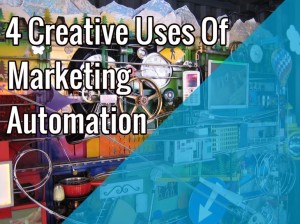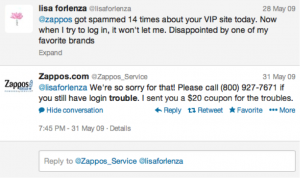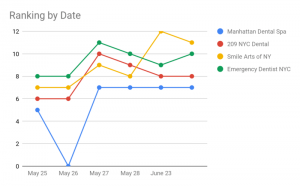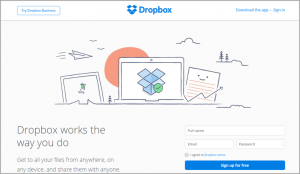Despite the restrictions, targeting iOS users is still crucial for marketers. Here are four tips to help pivot your advertising strategy.
It’s no secret that the iOS privacy changes are proving to be a significant blow to social media networks and marketers. In the last couple of years, Apple has made it harder to target ads to iOS device users. This impacts major social platforms like Facebook, Instagram, and Snap which rely on tracking across other apps and websites to operate.
While it’s difficult to conjure any sympathy for these social media giants, marketers and smaller app developers are seeing their entire businesses being upended by these changes, as Facebook is often a primary channel for audience targeting.
All is not lost and there are ways to help you navigate these new changes.
iOS still dominates ad spend market share — here’s why
It’s helpful to look back at the impact of Apple’s App Tracking Transparency (ATT) privacy features on marketers’ ability to target iOS users.
iOS’s market share for ad spend was 34% in April 2022, down 4% from April 2021, when Apple implemented iOS 14.5, according to a report from mobile ad-tech firm Adjust. In the latter half of 2021, the iOS market share dipped below 30% by October 2021.
Many marketers and industry experts forecasted that marketers would shift ad spending to Android targeting to compensate for the loss. But new data shows that from April 2022 to the third quarter of this year, that shift to more Android targeting isn’t yielding the results they were getting from iOS device targeting.
Now, marketers are moving ad spend back to targeting iOS devices, even with the limited scale and higher CPMs. According to Adjust, this new gain in market share can be traced back to conversion data, where even the limited number of opted-in iOS users compared to Android are yielding more revenue through larger average order sizes.
This notion may not surprise many retail marketers, but it’s important to note that new data backs this up. Even with Apple users making up just 27% of the US market compared to Android’s 72% market share, Android users purchase less at a lower average order amount. While it may seem counter-intuitive, “iOS users are still not only a more lucrative customer base, but they are potentially more cost-effective,” says Thomas Petit, an independent app development consultant.
So, why do these shifts in market share matter to us marketers? It’s because even with the impending impact of iOS 16, we still need to continue to target iOS devices despite limited reach to take advantage of the considerably larger purchasing power of iOS users.
Even as the iOS landscape becomes more restrictive and shifts further away from any form of third-party tracking, there are tactics marketers can implement now to better position themselves for success. Here are just a few tips to get the most out of your iOS targeting.
4 ways marketers can navigate and succeed in the storm of iOS privacy changes
1. Prioritize and personalize your first-party data
Some levels of personalization and contextualization will be harder to achieve amid all the new iOS changes. However, it doesn’t need to be an impossible task. Now more than ever, marketers need to rely on their first-party data and make the most of personalization based on declared location, setting up multi-language campaigns, and moving toward more video advertising.
Another vital tool is to take another pass at your CRM segmentation, focusing on audiences that yield long-term value rather than short-term profit. Also, look at trusted third-party data companies that offer CRM enrichment services to help you learn more about your customer base. This additional data, including household income and the presence of children, will open up new ways to segment your first-party data and uncover new products and services that will resonate with them based on their household make-up and life stage.
2. Prioritize conversion events
While conversion-level data is a marketer’s primary tool to assess performance, iOS limitations within Facebook make this more and more difficult. It can also be helpful to flip this around and watch for other specific events in your Facebook Performance Measurement data.
For example, if you’ve only been collecting post-purchase data, integrate other signals like last-click conversion events in both Facebook and Google Analytics. These additional signals can capture new data that can be incorporated into more meaningful path-to-purchase patterns.
3. Unlock more data with UTM tracking
iOS changes have given marketers no shortage of blind spots to navigate when it comes to campaign performance, but Google Analytics can help you navigate around this issue.
When advertising on Facebook, use UTM parameters on your site’s URLs. As a result, any data tracked by Facebook will populate in your Google Analytics. UTM tracking allows you to backfill user insights and create additional info on your target audience – where they are from, links they click on, and more.
4. Optimize goals on Google Analytics
Once you have set up UTM tracking, create additional goals in Google Analytics aligned with essential conversion actions tracked on Facebook. This tweak can offer some new insight to see how these other goals fit within your performance metrics. Any decrease in conversions will now be visible, which can help you optimize, improve, and create a better strategy for future campaigns.
The big picture
We all know that iOS privacy changes will continue to become more restrictive. Still, marketers can use the data they have to build new levers and additional lenses to further optimize and meet their KPIs.
A winning recipe involves pivoting away from the easier short-term ad targeting goals, dedicating more focus and tools to look at the long game, and building more holistic goals centered around customer lifetime value.
When you invest in higher value, long-term customers and prospects, you’ll reap the benefits, including lower long-term ad spend, less competition in long-tail audience targeting, and more personal and fruitful relationships with existing customers.
The post 4 tips to navigate the advertising impact of iOS privacy changes appeared first on MarTech.
MarTech(5)








